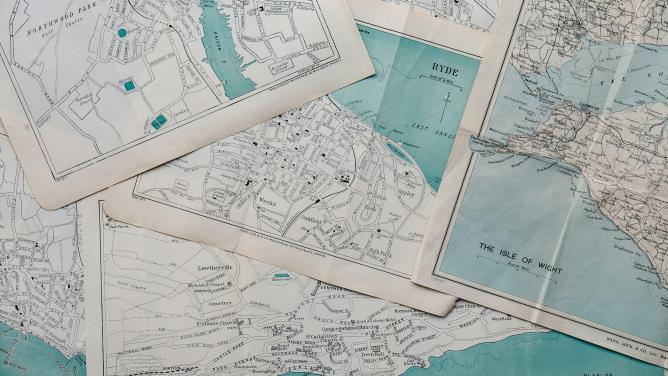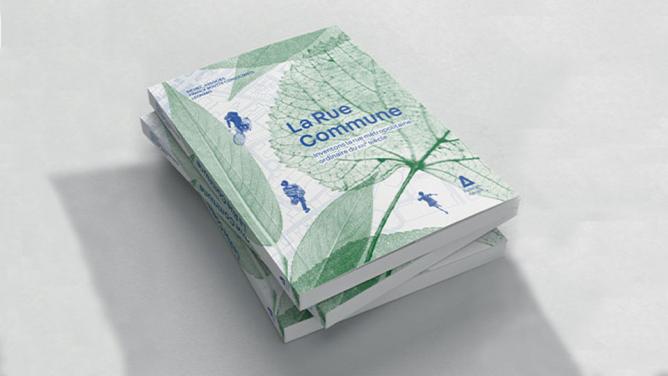Summer’s finally here, which means there’ll probably be a few heatwaves on the horizon. Last summer was the hottest on record, beating the previous records set in 2019 and 2016.
As the climate emergency increasingly threatens, heatwaves are going to occur more often, for longer and be more intense over the coming decades. However, they are already the deadliest weather phenomenon in Europe, as 140,000 deaths associated with 83 heatwaves have been recorded since the beginning of this century.
Global warming is often associated with heatwaves and drought; however, the climate emergency is making cities more vulnerable to flooding. Rising sea levels commonly affect coastal cities (which could force 630 million people to leave their homes) – but that’s not all. The climate crisis has caused an increase in the number of extreme weather events, such as storms, hurricanes and other torrential rains.
The 2020 North Atlantic hurricane season was particularly brutal, with a record 27 hurricanes. Let’s not forget that in 2005, hurricane Katrina alone plunged 80% of New Orleans under water, killing 1,800 people. Flooding is the most common natural hazard in France: 17 million people are exposed to the risk of flooding due to river banks bursting, and 1.4 million are at risk of coastal flooding.
The end is near for glass skyscrapers
If we want to make cities more resilient to heatwaves and flooding, we must first change our architectural ways. Time is being called on skyscrapers with uniform glass facades that absorb infrared light, in favor of buildings designed with facades that prevent heat from building up inside as much as possible or using innovative materials such as composites made with isolating layers or thermal phase change materials.
Roofs are also a focal point in the fight against global warming. The Brittany-based startup Cool Roof startup designs a bio-based roof coating that reduces heat islands, making for a low-tech solution that’s both sustainable and affordable.
Green roofs covered with plants that can withstand high temperatures and periods of drought are another fertile way to help keep it cooler indoors when the mercury rises. Land re-vegetation and greening roofs is a way of killing two birds with one stone, as both improve water retention and thus reduce the risk of flooding. Let’s not forget wet floodproofing too, in which structures are designed in a way to allow floodwater to enter without causing damage (resistant materials, protecting equipment, correct management of openings, etc.).
Architect Étienne Bourdais has been leading ideas and discussions at Leonard on innovative design-build for infrastructure and works which take into consideration the effects of climate change. He has brought together architects, design studios, VINCI employees, project managers and urban planners to work on concrete climate change adaptation case studies which have low carbon footprints. These include the urban redevelopment of a coastal strip (Concorde); modularization of a hub airport exposed to flooding (Clément Blanchet Architecture); the design for low-energy residential care homes that provide thermal comfort and accessibility (Dream architectes and ZEFCO); and the adaptation of a seafront hotel project in Mauritius (AIA life designers). The latter has applied a resilient approach by building structures from locally sourced and bio-based materials designed to withstand strong winds, and is built high up to be less vulnerable to rising water levels.
Tools are gradually being introduced systematically to facilitate the architect’s job. The Observatoire de l’Immobilier Durable (Green Building Observatory) is behind the Bat-ADAPT program which is designed to help those in the construction and urban planning industries with the adaptation process. The tool can assess a building’s climate vulnerability when faced with different weather phenomena such as heatwaves and floods, and provides prevention recommendations.
Inspired by traditional architecture
The past can also be a source of inspiration. Those living in coastal regions have long learned to build houses raised on stilts to protect against floods. Many examples can be found throughout different cultures: from palafitos or stilt houses on the the island of Chiloé off the coast of Chile, and traditional wooden huts of the Ifugao people in the Philippines, to the Norwegian rorbu. These types of structures help provide cooler air as air circulates under the house.
Likewise, some of the hottest regions in the world had to learn to stay cool long before air conditioning was invented, and their traditional architectural techniques can serve as a source of inspiration. Take the Iranian badgir or windcatcher, a structure used to create natural ventilation in buildings, or even houses built around an interior courtyard typical to Gulf countries, which dissipate heat during the day.
Cities going green
Whether the adaptation process draws on tradition or the most recent innovation, it must look beyond the construction industry if it wants to have a significant impact. It has to go hand in hand with a political vision, backed by the local community. In fact, vulnerability to heatwaves and floods is also systematically linked to land use (soil mineralization, absence of vegetation, etc.) and urban morphology (major traffic routes, lack of evacuation routes…). As such, urban sprawl, excessive use of concrete and draining wetlands to build real estate projects all contributed to making Houston more vulnerable to Hurricane Harvey, which flooded a third of the city in 2017.
One simple solution can be found in greening and by reintroducing nature. Melbourne in Australia is planning to massively increase their urban forests to increase air quality, provide more shade and reduce the need for air conditioning. Meanwhile, Milan’s ForestaMi project aims to plant three million new trees in the city by 2030 to reduce urban temperatures by two degrees. Tree roots also help absorb water, while the leaves reduce the amount of water that accumulates on the ground.
In Lyon, France, local authorities have transformed and reconfigured Rue Garibaldi into a five-kilometer urban boulevard lined with trees, featuring light-colored pavements which absorb more heat and ditches to collect runoff water. Temperature sensors are used to measure the cooling effect provided by greenery and to detect when trees need watering. Runoff water stored in underground basins is also recycled for carrying out the latter.
We’ll also see an increase in tech-driven tools which enable cities to detect risks upstream. For example, the Toulouse-based startup vorteX.io has designed a hydrological measurement service for local authorities, which relies on an extensive network of intelligent sensors and remote sensing satellite solutions. Various hydrological data can be collected in order to monitor waterways and to anticipate flooding or drought.
Initiatives at all levels: from street level to worldwide
Initiatives at a municipal level are not ambitious enough, as risks posed by heatwaves effect the entire region. With this in mind, VINCI group set up Resallience, offering consulting, modeling and project management services to cities and regions looking to adapt their infrastructures to climate change. In a similar vein, last March the ADEME launched a call for projects aimed at developing regional resilience to adapt to climate change, by producing open (or shared) resources.
Public and private actors must come together and also have a long-term vision. With this in mind, VINCI has contributed one of the three winning projects to the ADEME’s call for projects. “La rue commune” is a guide co-developed with Richez & associés and Franck Boutté Consultants. It aims to help regions and city decision-makers develop a new standard of ordinary metropolitan streets ready for the post-carbon, post-Covid world. The guide has a heavy focus on transforming mobility, as well as two main action points: soil and land transformation, and transforming land use. Waterproofing removal, drainability and soil fertilization are just a few ways of easing the fight against heatwaves, droughts and flooding.
Meanwhile, the United Nations’ Cool Coalition environment program aims to help countries implement national strategies for developing environmentally-friendly alternatives to air conditioning. It sees different countries (France, the Philippines, Japan), international organizations (the World Bank), cities (Medellin, Copenhagen) and large groups (Engie, Electrolux) all working together.
And finally, here in France the AMITER national competition is looking for new ideas and solutions for restructuring regions exposed to natural hazards, such as rising sea levels. Entries close on 16th July.


